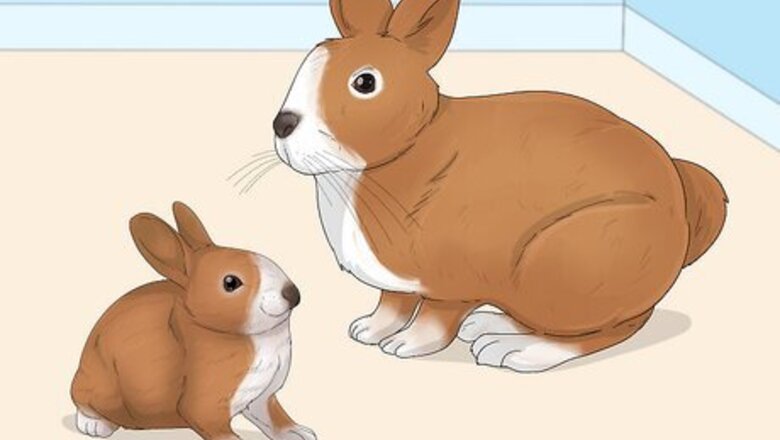
views
Figuring Out the General Age of a Rabbit
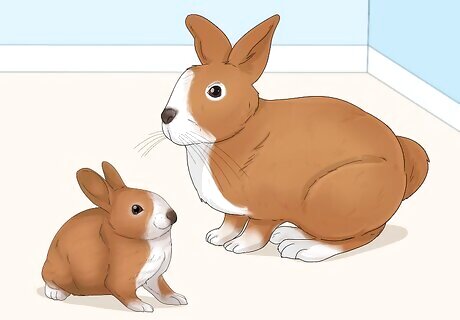
Use general age categories to categorize the rabbit. This will give you a good way of starting your assessment. A young rabbit is up to 9 months of age. An adult rabbit is approximately 9 months to 4 - 5 years of age. An elderly rabbit is 4 - 5 years upwards. Some rabbits live to be 10 - 12 years of age.
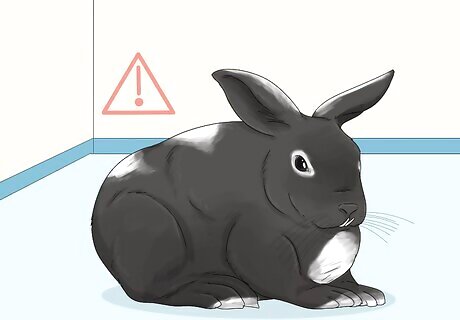
Don't assume the age will be easily identified. The reason rabbit's are so hard to age is that they don't have any distinguishing marks or features that change as the rabbit ages. Unlike many other animals, rabbits in young adulthood and old age can look very, very similar. This is in contrast to horses, which can be aged fairly accurately by examining their teeth because they have a unique set of marks which grown out with the teeth as the animal ages. Even if there were helpful marks on rabbit teeth, those affecting the molars would be hard to see as they are right at the back of the mouth and it requires special instruments to see them.
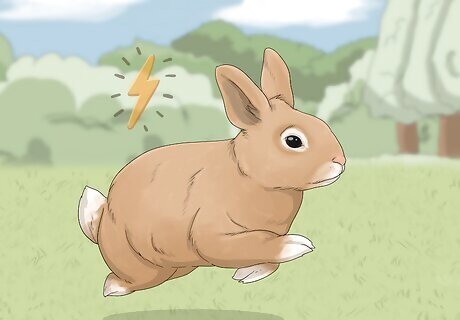
Assess the rabbit's overall appearance and behavior. You want to make a list of your rabbit's attributes in order to gauge what age it might be. Things to look for include: Activity Levels: Does the rabbit regularly exhibit playful behavior or does it mainly sleep and eat? Does the rabbit move in fluid, graceful movements or does it seem stiff and sore? Overall Appearance: Is the rabbit's coat soft and luxurious or harsh and course? Physical Wear and Tear: Does the rabbit have sores of/on the hocks? Educate adopters on proper rabbit care. "As an animal shelter worker, people often asked me the age of our rabbits. I used to struggle with narrowing it down. Now, when adopters take home an older rabbit, I can confidently explain typical elderly behavior patterns like decreased activity. I also share this guide’s tips on sore hocks and overgrown teeth so they can provide appropriate at-home care." - Heather M. Gain insight on bonding bunnies. "I adopted a male bunny named Arthur to bond with my female, who lost her mate. At first, I was anxious about their 4-year age difference and squabbles. This article helped me recognize common territorial behavior in adolescent rabbits. Knowing Arthur should outgrow reactive tendencies with maturity brought me peace of mind during the bonding process." - Gail K. Determine baby bunnies’ feeding needs. "As a new bunny owner, I panicked when finding a litter of babies I wasn’t prepared for. This guide’s detailed developmental stages let me pinpoint their exact age based on open eyes and interest in nibbling grass. Identifying they were 3-4 weeks old assured me they needed solid food, not formula." - Dan W. Quickly grasp rabbit life stages as a novice owner. "Previously, I knew nothing about rabbits, so I found this article incredibly beginner-friendly. The pictures clearly demonstrate what to look for at different life stages. Now, I can monitor my bunny’s energy, weight, coat, teeth, and mobility to broadly assess where she’s at. I feel equipped to provide age-appropriate care." - Tatiana H. We want to hear from you! Advice from our readers makes our articles better. If you have a story you’d like to share, tell us here.
Assessing Whether You Have a Baby or an Adolescent Rabbit
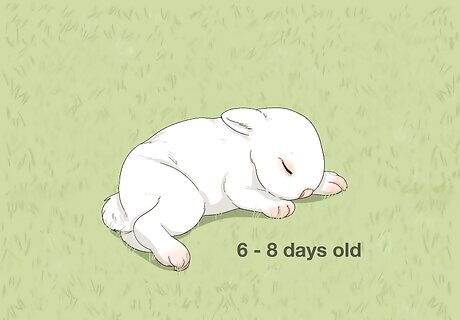
Figure out if the rabbit is still a baby. Is the rabbit still growing and still spending a lot of time with its mother? Baby rabbits are born blind, and deaf. They are very small and nursed by their mother once or twice every 24 hours, usually at night. By 6 - 8 days the eyes and ears open and they have thin fluff. By 2 weeks of age they will have a full coat of fur. By two weeks of age rabbits start showing an interest in nibbling grass and herbage. By 3 weeks of age they are regularly leaving the nest and readily reacting to sounds. Young rabbits begin weaning from the mother at about 4 - 5 weeks of age, by which time they look like miniature adults. Weaning is usually complete (the youngster no longer feeds from the mother) by 8 weeks of age.
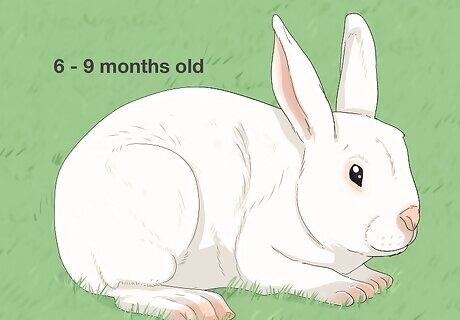
Determine if your rabbit is full grown. To figure this out you need to know how big your breed of rabbit should be when full grown. If you are uncertain if you have a small breed of rabbit that is an adult, or a young rabbit that is still growing, then take weekly photographs of the rabbit and compare the pictures. If necessary include the same object each week as a reference, or a rule. Depending on the breed, rabbits continue to grow until they are 6 - 9 months old (the top of the range for larger breeds).
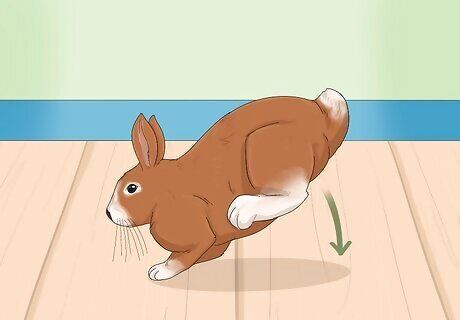
Assess the rabbit's reproductive behavior. Adolescence in the rabbit occurs when the rabbit start to produce reproductive hormones. This most commonly happens from 4 months of age onward, with 4 - 6 months being a typical age at which rabbits become interested in the opposite sex. Adolescent rabbits tend to be very nosy and inquisitive, and love to check out their environment. If they encounter another rabbit of the same sex, their rising hormones may cause them to squabble and fight. A young rabbit is likely to be reactive, and indulge in a lot of back paw thumping at perceived dangers. However, if they meet the opposite sex they may try to mate.
Distinguishing Between an Adult and an Elderly Rabbit
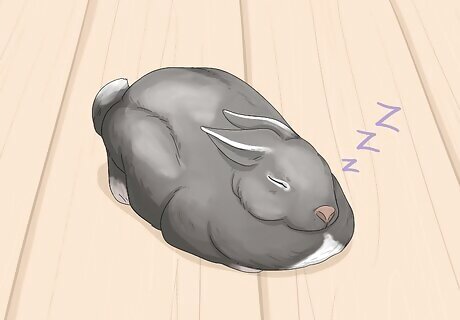
Look for behavior that indicates you have an adult or elderly rabbit. Adult rabbits can also show hostile mating behavior, but they are often less inquisitive of their environment. Adult rabbits tend to be active when awake and feeding, and divide their time between these activities and sleeping. When they are awake they give the impression of being alert and interactive. Older rabbits tend to sleep more and eat less, and may be prone to losing weight and become skinny. When they are awake they may react less to things going on around them, and seem less interested in their environment.
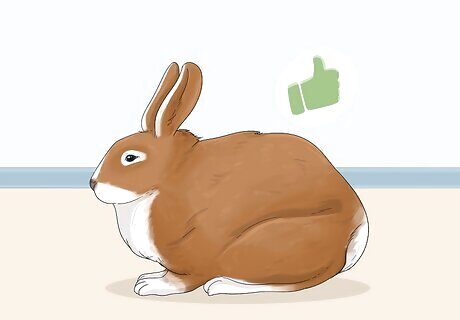
Assess the rabbit's overall appearance. A young rabbit is still growing, so you should be able to spot a change in size. An adult rabbit is at the peek of their physical powers and is likely to have a glossy, shiny coat, have bright eyes, be a good weight (possibly even plump) and move in an easy fluent manner. In contrast an older rabbit may have a dull coat, because they don't groom themselves as much. They may have impaired vision or hearing, and not interact with their environment as much as an adult rabbit. When they move they are liable to look stiff, and move awkwardly, perhaps shuffling along rather than hopping.
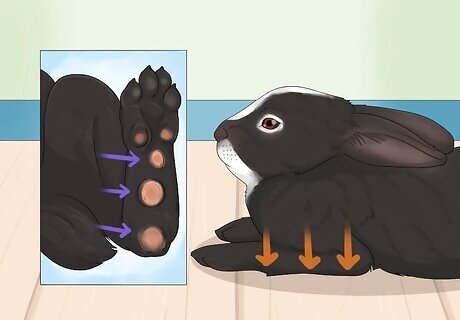
Look for sore hocks. There is no scientific link between sore hocks and age, but some rabbit keepers have noticed that older animals are more likely to have sore hocks. This condition is caused by the animal's body weight pressing down on the thin skin of their hocks, causing the fur to rub away and thick skin to develop. There are many variable factors in the development of sore hocks, which include the animal's weight (the heavier the rabbit, the more likely sores are to form), the depth of their bedding (lack of bedding is a risk factor), and how clean or dirty the bedding is (Urine soaked bedding scalds the fur and causes it to fall out). It is unlikely a young rabbit has all of these factors in place, so sore hocks are rare in a young rabbit. However, the older the rabbit gets the more it is likely these factors occur, resulting in hock calluses.

Look at the rabbit's teeth. Rabbits can suffer from overgrown teeth at any age, as this can be caused by their diet and the teeth not getting worn down, rather than age. However, older rabbits tend to eat less and so their teeth are more likely to become overgrown. The symptoms of overgrown teeth can include the rabbit grinding its teeth or having a wet chin where it drooled.












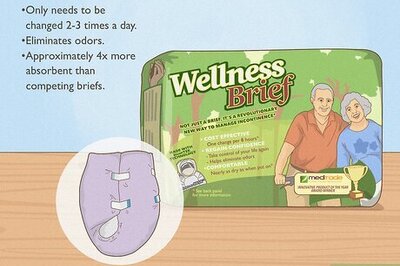
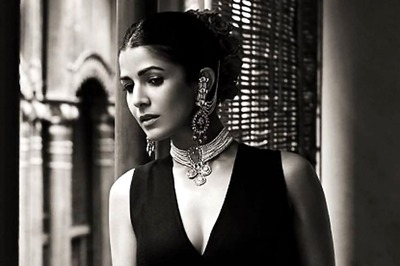

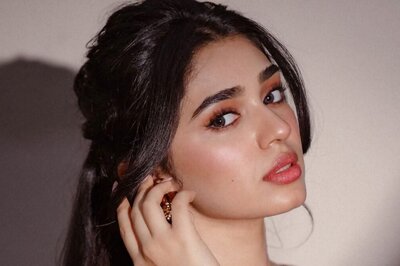

Comments
0 comment